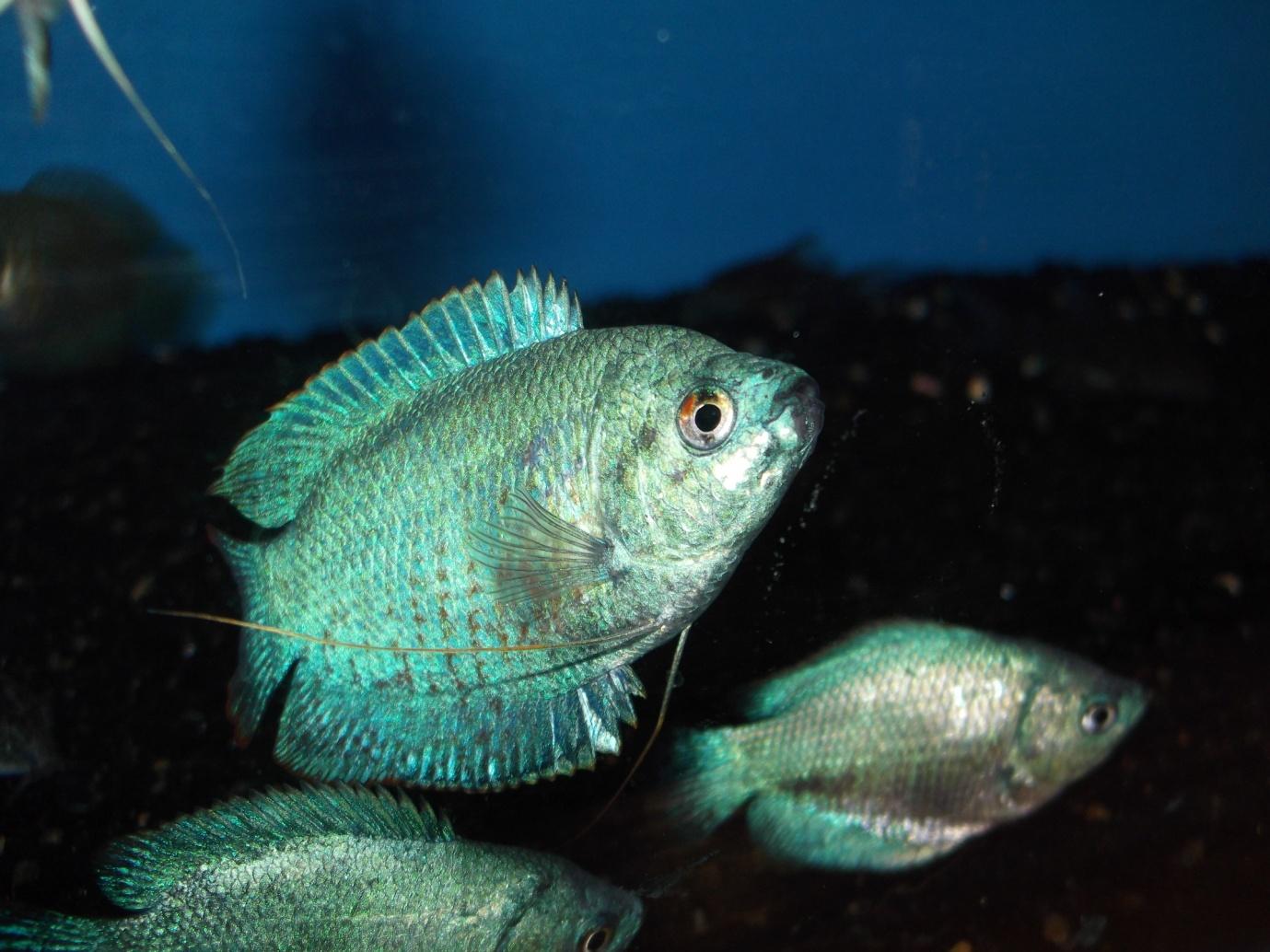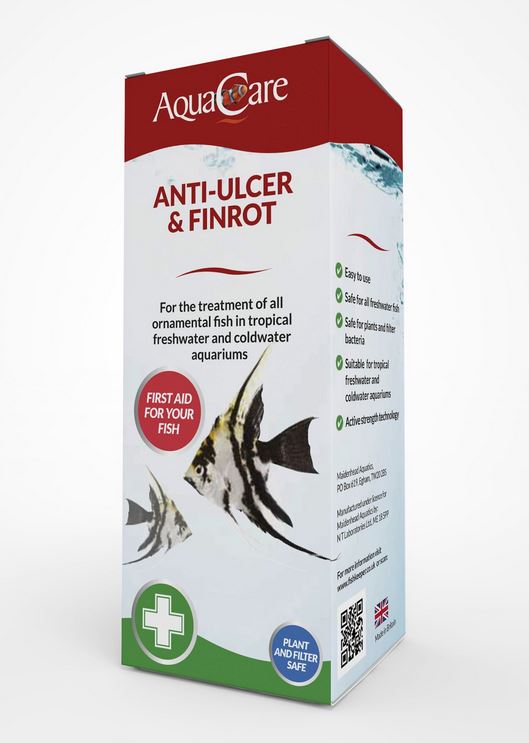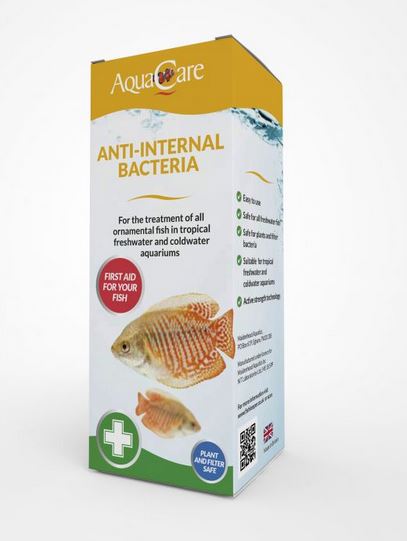Diseases in Fish: Bacterial Infections
Bacterial infections in fish take a few forms, with both internal and external ailments presenting a range of symptoms. These pathogens can be very damaging, with diseases such as Columnaris/Mouth rot (Flavibacterium columnare) capable of killing fishes very rapidly. Fin rot is seen fairly frequently, together with ulcers or lesions which tend to be secondary infections caused by trauma or poor water quality involving Aeromonas or Pseudomonas.

Internal bacterial infections are harder to diagnose, with the result that rather generalized conditions such as dropsy are often blamed on bacterial organisms. It’s important to note that these symptoms can also be caused by organ failure or tumors, which are unlikely to respond to treatment at home.
As with fungal problems, bacterial issues tend to be secondary infections. Infection is more likely to occur when the immune system of the fish is weakened due to stress. Background populations of opportunistic bacterial pathogens can be found in detritus and organic wastes in many systems, so good hygiene and maintenance is important in preventing outbreaks.
Although it may seem counterintuitive, it’s often best to begin a course of treatment by adding an antiparasite remedy – diseases such as columnaris or ulcers are often the result of initial damage caused by ectoparasites such as flukes or Tetrahymena, which need eliminating before the underlying problem can be resolved. Don’t forget the adage that prevention is better than cure and providing your fish with appropriate conditions will result in a healthy immune response that prevents diseases occurring. Factors such as carbonate hardness and appropriate seasonal temperatures can be very significant.
Adding additional aeration in the form of an air stone can be beneficial, especially for fish which may not appreciate the extra current generated by stronger water movement due to their reduced vigor. As some of the chemicals used in medications can lower dissolved oxygen levels, this is good practice as part of a standard treatment plan.
Be aware that chemical media such as carbon will absorb some or all the active ingredients of medications and should be removed before use.
For the treatment of all ornamental fish in tropical freshwater and coldwater aquariums.
Certain species of bacteria such as Aeromonas and Pseudomonas cause fin, mouth and body tissue to be eaten away. Early diagnosis is essential to prevent the infection becoming fatal. Anti-Ulcer & Finrot is an effective treatment against these bacteria.
Diagnosis Guide: The fish may have red wounds, ulcers, missing scales, red blotches, fin or mouth rot.
Poor water quality can be the primary cause of stress and disease in fish, so always use aquarium test kits to monitor your water conditions.
Directions:
1) If you require help to calculate the volume of water to be treated, please ask at your nearest Maidenhead Aquatics store
2) Shake the bottle thoroughly before use.
3) Mix required dose of treatment with 1 litre of aquarium water.
4) Add slowly to aquarium.
5) Treatment can be repeated after 7 to 10 days. If repeat treatment is required ensure diagnosis is correct, check water quality and carry out a partial water change between treatments (up to 25%).
Dose: 10ml to 50 litres of aquarium water
For the treatment of all ornamental fish in tropical freshwater and coldwater aquariums.
Certain species of bacteria such as Pseudomonas, Aeromonas and Vibrio bacteria can infect fish internally, causing an array of symptoms including dropsy. Anti-Internal Bacteria penetrates into the fish to reach the disease-causing bacteria and eradicate them.
Diagnosis Guide: The fish may appear lethargic, with clamped fins, have red blotches on fins or body, raised scales and bulging eyes.
Poor water quality can be the primary cause of stress and disease in fish, so always use aquarium test kits to monitor your water conditions.
Directions:
1) If you require help to calculate the volume of water to be treated please ask at your nearest Maidenhead Aquatics store
2) Shake the bottle thoroughly before use
3) Mix required dose of treatment with 1 litre of aquarium water
4) Add slowly to aquarium
5) The treatment can be repeated every other day up to four applications if necessary. If the aquarium water had a GH of 11°dH or more and a pH of 7.5 or more, the dose can be doubled.
Dose: 10ml to 50 litres of aquarium water




